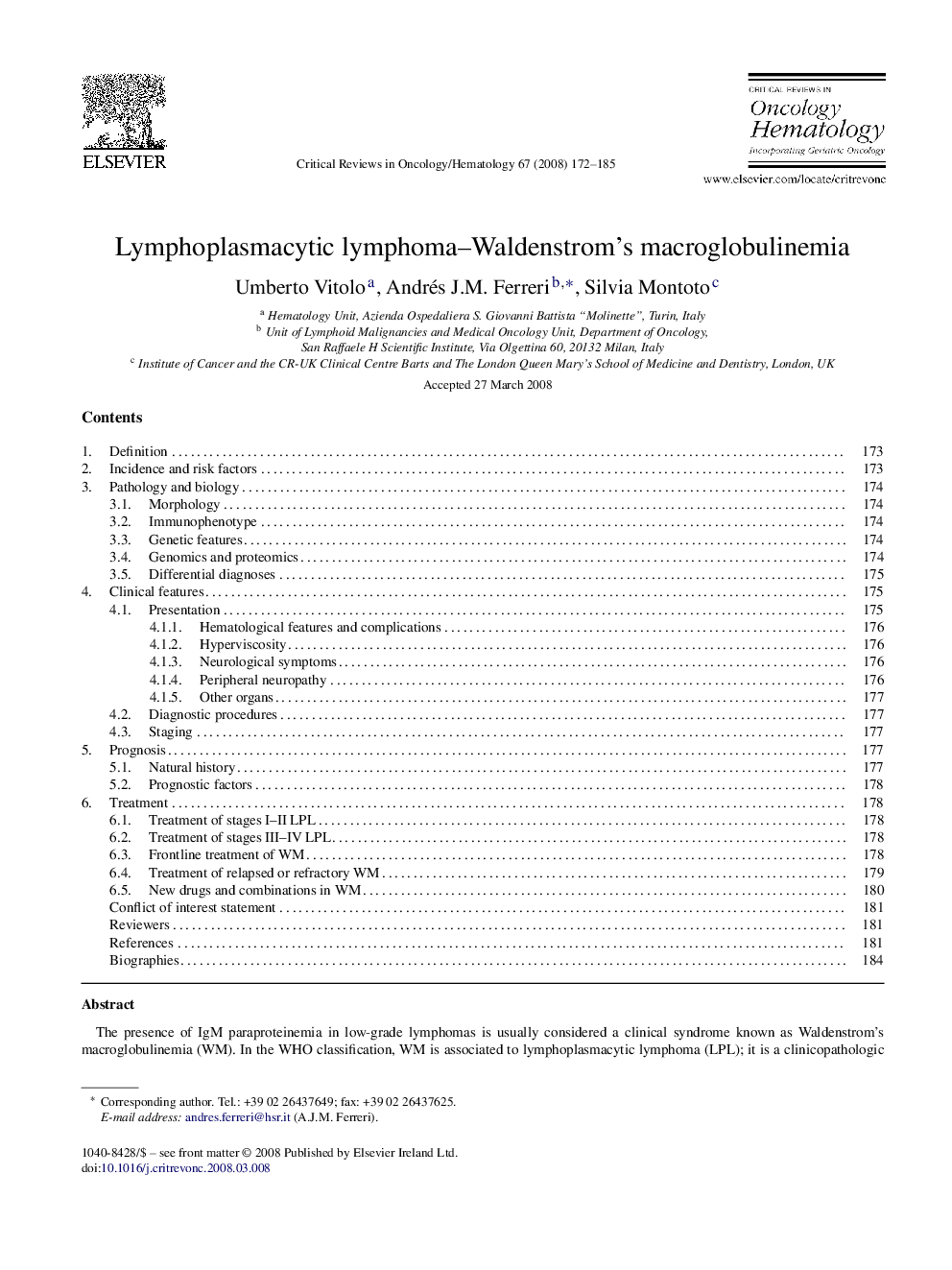| کد مقاله | کد نشریه | سال انتشار | مقاله انگلیسی | نسخه تمام متن |
|---|---|---|---|---|
| 3330072 | 1212429 | 2008 | 14 صفحه PDF | دانلود رایگان |

The presence of IgM paraproteinemia in low-grade lymphomas is usually considered a clinical syndrome known as Waldenstrom's macroglobulinemia (WM). In the WHO classification, WM is associated to lymphoplasmacytic lymphoma (LPL); it is a clinicopathologic entity characterized by a monoclonal expansion of predominantly small B-lymphocytes with variable plasmacytoid differentiation. LPL constitutes less than 5% of all NHL and it is associated with hepatitis C virus infection in 26% of cases. Cells of LPL/WM are B cells positive for monocytic Ig light chains, IgM, pan-B-cell markers, and negative for CD3 and CD103. The t(9;14)(p13;q32) is present in 50% of LPL, and determines PAX-5 over-expression. 6q21 deletion is observed in 42% of cases.LPL occurs in older adults. Clinical presentation usually consists of disseminated disease, but extranodal involvement and leukemic phase are rare. Most WM patients have symptoms attributable to tumour infiltration and/or monoclonal protein. In fact, a monoclonal serum paraprotein of IgM type and hyperviscosity symptoms may occur in more than 20% of cases (WM). Hyperviscosity syndrome is usually manifested by bleeding, blurring or loss of vision, dizziness, headache, and neurologic symptoms. Malignant infiltration of the CNS (Bing–Neel syndrome) is uncommon.LPL/WM is an indolent malignancy that is not usually curable with conventional treatments. The median survival of patients with LPL or WM is 50–60 months, transformation to large cell lymphoma may occur. Stage definition is irrelevant in WM considering that initiation of therapy is decided on the bases of prognostic factors and the development of disease-related symptoms and signs. The main adverse prognostic factors are older age, B symptoms, anemia, low albumin serum levels, raised SGOT, and high beta 2-microglobulin values.Several therapeutic alternatives for newly diagnosed or relapsed LPL/WM are available; however, the best location for every strategy is a matter of investigation. Several new drugs are being assessed in prospective trials. As a significant progress in this field, response criteria and therapeutic recommendations were updated during the Third International Workshop on WM (7–10 October 2004, Paris, France).
Journal: Critical Reviews in Oncology/Hematology - Volume 67, Issue 2, August 2008, Pages 172–185